Sep 23, 2021 | Brazil, China, Data and Methods, Energy & Climate, India, Russia, Science and Policy, Young Scientists
By Neema Tavakolian, 2021 IIASA Science Communication Fellow
Ever wonder why countries can never agree on issues related to climate change and the environment? Young Scientists Summer Program (YSSP) participant Felix Schenuit dives into the politics and challenges surrounding carbon dioxide removal in international climate negotiations.
The Paris Agreement has been lauded as a landmark effort to address climate change and has been signed by nearly every country in the world. The agreement sets out ambitious goals such as reaching temperature targets, setting net-zero carbon targets, and providing financial, technical, and capacity building support to those countries that need it.
One topic that has been receiving increasing attention since the adoption of the agreement is carbon dioxide removal, or CDR – which comprises man made processes involving the direct removal of carbon dioxide from the atmosphere and sequestering it somewhere else, usually underground or under the sea floor. Since it was first proposed, CDR has been discussed on many platforms including critical comments, journals, and studies. 2021 IIASA YSSP participant Felix Schenuit studies how the debate, which has been largely ignored by policymakers until the Paris Agreement, is evolving, and how CDR is being taken up in climate policymaking.

© Felix Schenuit
Felix Schenuit comes from a background of political science and public policy. It was during his employment at the German Institute for International and Security Affairs (SWP) that he became fascinated by CDR and the political debates surrounding the impacts it can have on the fight against climate change. This is when he decided to combine his newfound interest with his background and experiences in international relations and public policy to pursue a PhD at the University of Hamburg comparing CDR policymaking in different countries and the role scientific knowledge has on its implementation.
Building on a previous study comparing CDR governance among nine Organisation for Economic Co-operation and Development (OECD) cases, Schenuit is now focusing on the role of scientific knowledge surrounding CDR in Brazil, China, India, and Russia. These countries account for a significant portion of the world’s greenhouse gas emissions due to their rapid industrialization and expanding economies. China and India are especially significant due to their great influence in ongoing international climate negotiations regarding the Paris Agreement.
Schenuit uses integrated assessment models to gather information and data about the role of CDR in different countries in decarbonization pathways.
“These models help us to understand what amount of CDR we are likely to need to achieve Paris Agreement targets. Case studies on specific countries are an important second step to explore facts on the ground about different policy initiatives, emerging CDR facilities, and efforts in each region. We reach out to country experts and build interdisciplinary bridges to investigate how CDR is addressed politically, what amounts are available and politically feasible, as well as relevant knowledge gaps,” he explains.
One of the biggest challenges remaining for CDR is limited knowledge about different CDR methods, both in science and policy circles. There are many ways one can remove carbon dioxide from the atmosphere, ranging from afforestation, to soil carbon sequestration, ocean fertilization, direct CO2 capture from the air, and the use of biochar, among others.
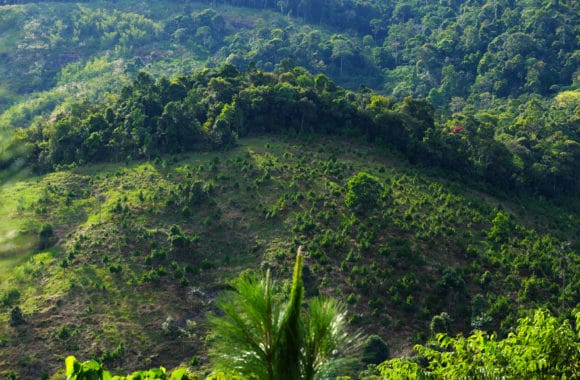
Reforestation on hill at Bao Loc mountain pass, Vietnam © Hoxuanhuong | Dreamstime.com
“When it comes to methods, many policymakers are unaware of the portfolio of available methods. Each method has different tradeoffs, both environmentally and politically. For example, in Germany, carbon capture and storage (CCS) is very contested and most policymakers are hesitant to even address CDR. Thus, in Germany one may need a different set of methods than in the UK, for example, where CCS-based CDR methods are pursued proactively,” Schenuit says.
Many predict that the role of international politics in CDR governance under the Paris Agreement is going to be difficult and tricky to navigate. Schenuit argues that it is still a bit too early in the debate for predictions as policymakers have only recently been directly addressing CDR. He does however agree that there is already strong evidence of politics at play and alliances are forming.
The study on Brazil, China, India, and Russia will yield fascinating results, as it will give us an idea about future disputes and questions regarding the carbon in our atmosphere. Questions like where we will be removing carbon and who is going to pay for it. One thing is for certain, however. Time is running out to meet the targets of the Paris Agreement, and international cooperation is desperately needed.
Note: This article gives the views of the author, and not the position of the Nexus blog, nor of the International Institute for Applied Systems Analysis.
Aug 12, 2021 | Climate Change, Evolution, Science and Policy, Women in Science, Young Scientists
By Neema Tavakolian, 2021 IIASA Science Communication Fellow
Young Scientists Summer Program (YSSP) participant Lyndsie Wszola explores how human interactions with warming freshwater systems have affected the evolution of fish species through the lens of the North American walleye.
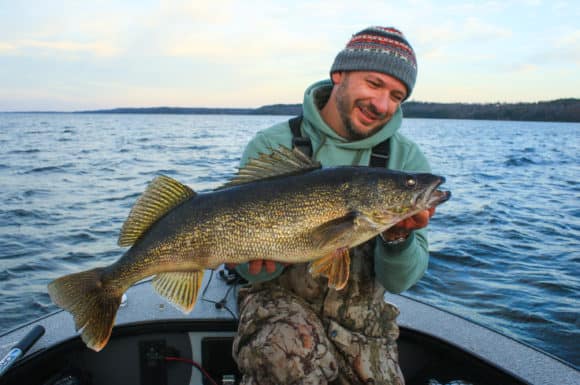
© Justinhoffmanoutdoors | Dreamstime.com
The effects of climate change have intensified over the past few years, especially in our oceans, and human based activities contributing to it are now being taken more seriously. While the warming of our oceans is indeed troubling, many forget that freshwater systems are also being influenced, and that this is affecting the growth and evolution of the species that reside in them.
2021 YSSP participant Lyndsie Wszola wants to explore changes in freshwater systems using human-natural modeling systems at IIASA.

© Lyndsie Wszola
Growing up with a conservation officer father, Wszola is a second-generation conservationist. Knowing she wanted to enter this field at an early age, she realized that she had to get into research and academia first. Her main interests while studying at the University of Nebraska have been the interactions between humans and wildlife.
While researching the relationships between hunters and ring-necked pheasants, she discovered an affinity for quantitative research. This curiosity went even further after she discovered literature on harvest induced evolution and mathematical ecology specifically pertaining to fish populations. Together, this initial desire to explore human and wildlife interactions and her newfound interest in mathematical ecology, led Wszola to take a closer look at North American freshwater systems and how we as humans are influencing its ecology. Her research specifically delves into the growth and evolutionary changes seen in the North American walleye (Sander vitreus) – a popular fish in Canada and the United States. The reason for its fame is its palatable taste as a freshwater fish and its status among anglers, making it both a commercially and recreationally fished species.
Walleye was chosen as the subject of Wszola’s research for many reasons. First, walleye, like many fish, are ectotherms meaning that their body processes and behaviors are directly linked to their body temperature, which is in turn directly linked to the temperature of the water. Unlike other fish however, there is already plenty of research and data on the relationship between the walleye’s growth and temperature. This information makes it much easier to simulate the walleye’s eco-evolutionary growth dynamics in the context of human driven harvests in warming waters. Wszola will also be working with very large datasets spanning multiple latitudes ranging from Ontario, Canada down to Nebraska, USA. The datasets include up to six million fish with four million of those being walleye.
“My goal is to model the influence of temperature on fish harvests based on size. Due to their ectotherm nature, we can observe the changes in body size in annual harvests. As waters warm, walleye grow much faster. We also know that intensely harvested fish often evolve to reach maturation at smaller sizes. When coupled with rising temperatures, this relationship between harvest induced and temperature induced evolution can be fascinating, as we now have two sources working together to change the growth evolution of this fish,” she explains.
Due to warming temperatures, many natural resources are at stake with some of the most sensitive being aquatic in nature. Research like this is important as it allows us to look at our relationships with the environment to be able to react accordingly.
“I hope that the research I do yields fascinating enough results so that from a practical standpoint, future fisheries policies can include climate change dynamics in addition to fish and human dynamics,” Wszola concludes.
Note: This article gives the views of the author, and not the position of the Nexus blog, nor of the International Institute for Applied Systems Analysis.
Jul 29, 2021 | Korea, Science and Policy, Young Scientists
By Fanni Daniella Szakal, 2021 IIASA Science Communication Fellow
Despite the political challenges, 2021 YSSP participant Eunbeen Park is researching ways to restore forests in isolated North Korea.
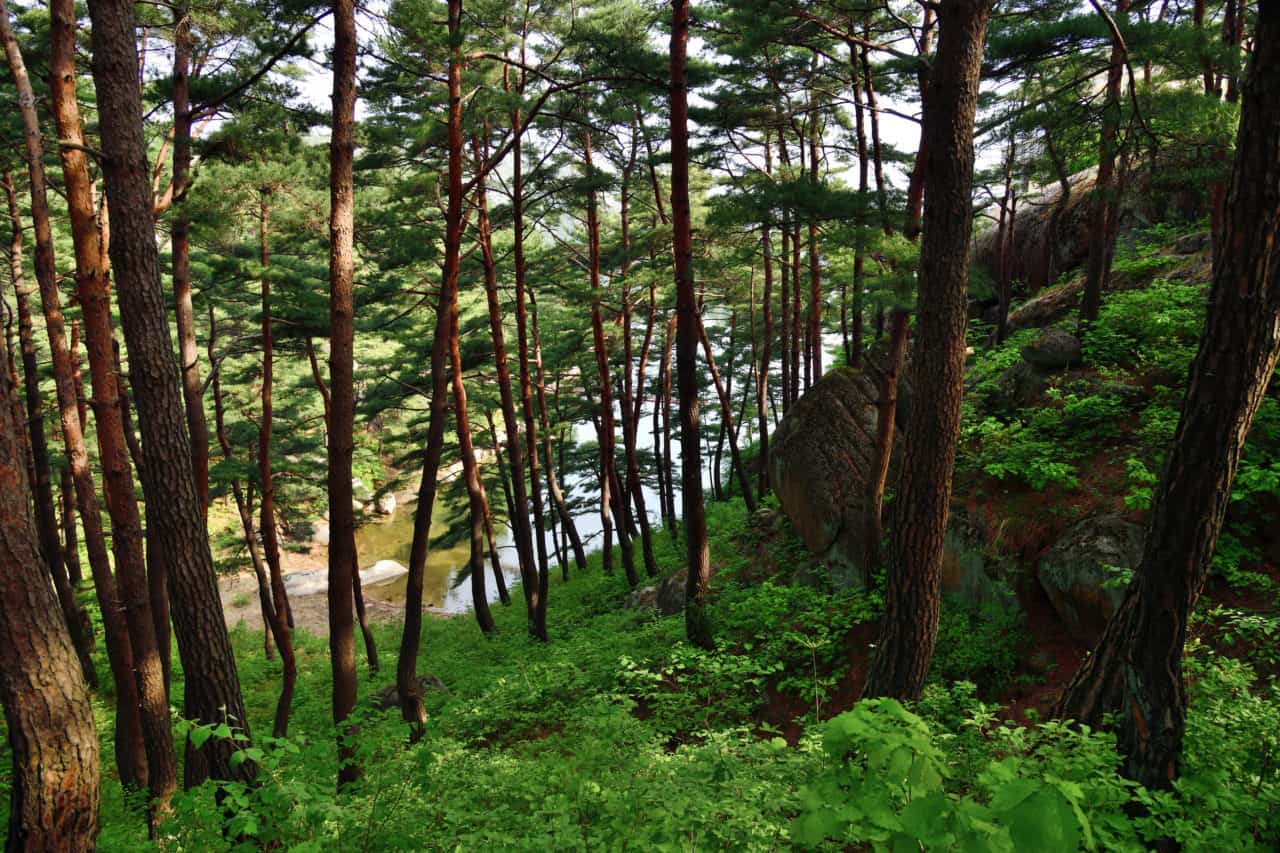
© Znm | Dreamstime.com
North Korea is somewhat of an enigma and getting a glimpse into what transpires behind its borders is a difficult task. Based on our limited information, it however seems that its once luscious forests have disappeared at an alarming rate in the last few decades.
Deforestation in North Korea is fueled by economic difficulties, climate change, and a lack of information for effective forest management. As forests are recognized as important carbon sinks that are invaluable when working towards the climate goals established in the Paris Agreement, finding a way to restore them is imperative. Forests are also essential in solving food insecurity and energy issues, which is especially relevant in the face of the current economic hardship in North Korea.
Neighboring South Korea serves as a benchmark for a successful reforestation campaign after having restored most of its forest cover in the last half a century. South Korean researchers and NGOs are keen to support afforestation efforts in North Korea and it seems that the North Korean government is also prioritizing this through a 10-year plan announced by North Korean leader Kim Jong-Un in 2015. The strained relationship between the two Koreas however, often hinders effective collaboration.
‘’We are close to North Korea regionally, but direct connection is difficult for political reasons. However, many researchers are interested in studying North Korea and there are currently many projects for South and North Korea collaboration supported by the Ministry of Unification,” says Eunbeen Park, a participant in the 2021 Young Scientists Summer Program and a second year PhD student in Environmental Planning and Landscape Architecture at Korea University in Seoul, South Korea.
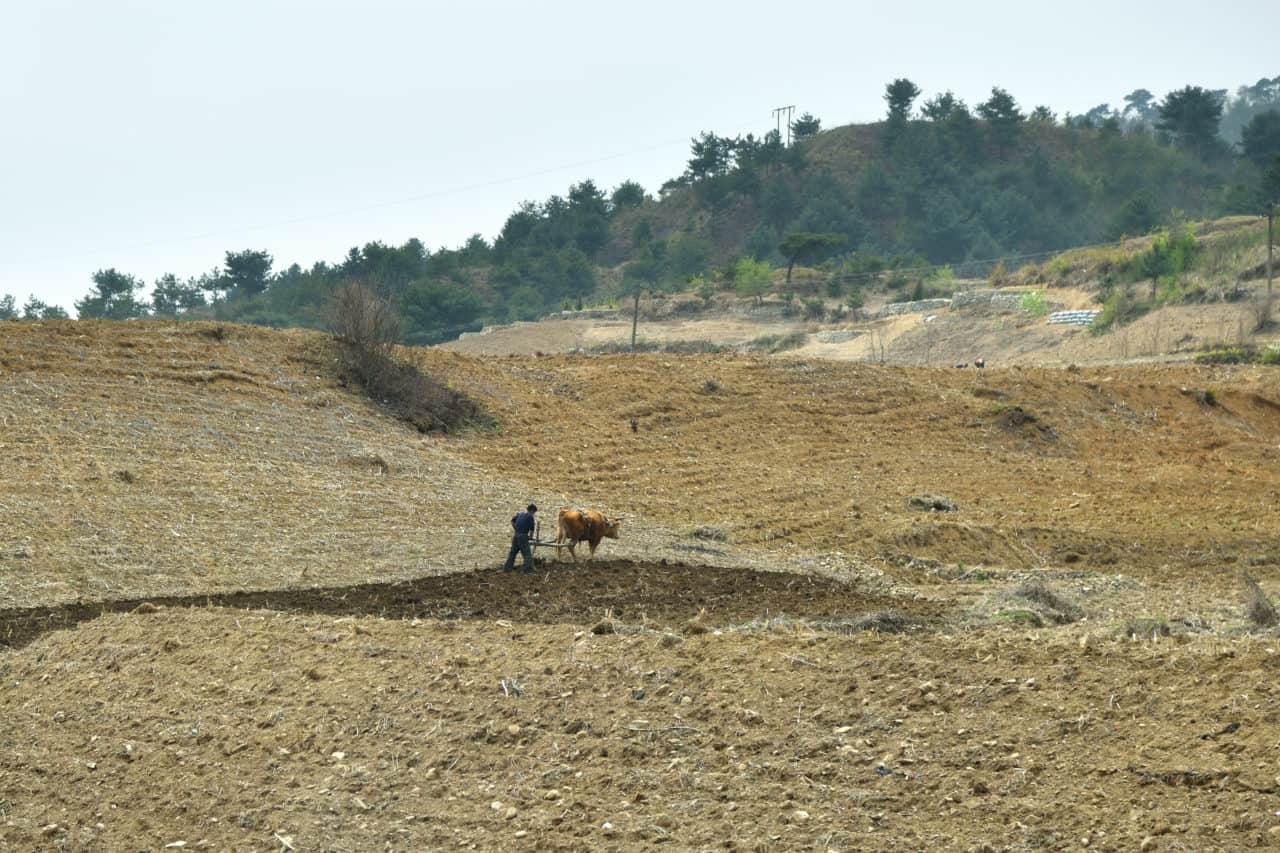
North Korean countryside © Znm|Dreamstime.com
Modeling afforestation scenarios in North Korea
Park specializes in using remote sensing data for environmental monitoring and detecting changes in land cover. During her time at IIASA, she will use the Agriculture, Forestry, and Ecosystem Services Land Modeling System (AFE-LMS) developed by IIASA to support forest restoration in North Korea.
First, Park will use land cover maps dating back to the 1980s to map the change in forest cover. She will then identify areas for potential afforestation considering land cover change, forest productivity, climate, and different environmental variables, such as soil type. She will also develop different afforestation scenarios based on forest management options and the tree species used.
According to Andrey Krasovskiy, Park’s supervisor at IIASA, when selecting tree species for afforestation we need to take into account their economic, environmental, and recreational values.
“From a set of around 10 species we need to choose those that would be the most suitable in terms of resilience to climate change and to disturbances such as fire and beetles,” he says.
Challenges in data collection
A major challenge in Park’s research is obtaining accurate information for building her models. If there is relevant research from North Korea, it is not available to foreign researchers and without being able to enter the country to collect field data in person, her research has to rely on remote sensing data or data extrapolated from South Korean studies.
Fortunately, in recent years, remote sensing technology has evolved to provide high-resolution satellite data through which we are able to take a thorough look at the land cover of the elusive country. Park will match these maps with yield tables provided by Korea University based on South Korean data. As the ecology of the two Koreas are largely similar, these maps are thought to provide accurate results.
Is there space for science diplomacy?
“Research shouldn’t have any boundaries,” notes Krasovskiy. “In reality however, the lack of scientific collaboration between research groups in South and North Korea poses a major obstacle in turning this research into policy. Luckily, some organizations, such as the Hanns Seidel Foundation in South Korea, are able to bridge the gap and organize joint activities that provide hope for a more collaborative future.”
Despite the diplomatic hurdles, Park hopes that her work will find its way to North Korean policymakers.
“I expect my research might make a contribution to help policymakers and scientific officials establish forest relevant action in North Korea,” she concludes.
Jul 8, 2021 | Biodiversity, Food & Water, Science and Policy, Young Scientists
By Neema Tavakolian, 2021 IIASA Science Communication Fellow
Young Scientists Summer Program (YSSP) participant Scott Spillias explores how the adoption of offshore seaweed farming could affect land use.
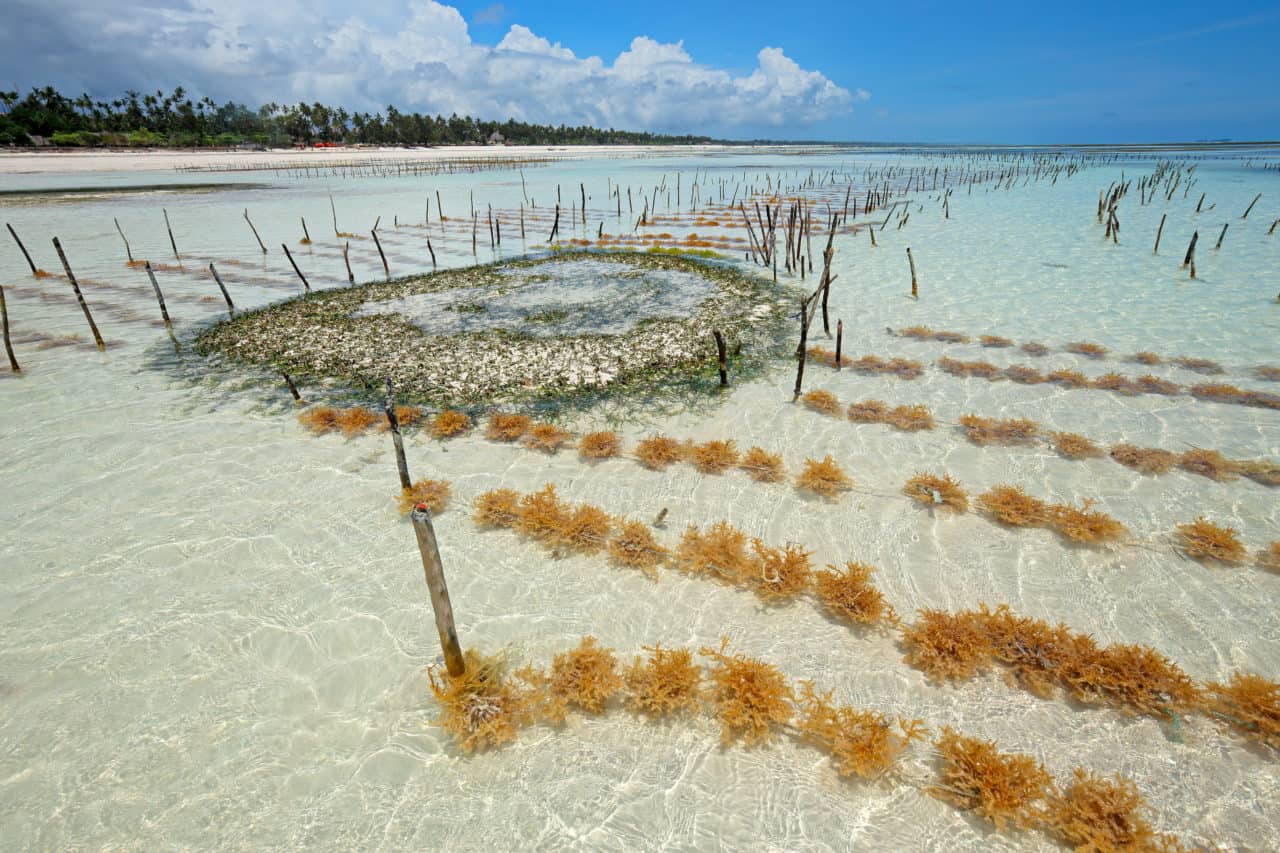
Seaweed farming in the clear coastal waters of Zanzibar island © Ecophoto | Dreamstime.com
Since the start of the industrial revolution, the Earth’s population has grown exponentially, and it is still growing every year. In addition to heavy population growth, human advances in medicine, science, and technology have allowed people to live longer lives as well. As more countries industrialize, the demand for land extensive commodities like meat and dairy have also increased. Deforestation has risen worldwide making way for cattle and other livestock grazing, and more of the food we grow is being dedicated towards livestock rather than human consumption.
With problems like unsustainable land use, climate change, and suburban sprawls in places like the United States and Australia decreasing available arable lands, this poses the question: is there any way we can feed a growing population without further damaging ecosystems and contributing to climate change? In addition to achieving this goal, we simultaneously want to promote equitable and just societies. 2021 YSSP participant Scott Spillias believes he might have a solution: seaweed.
Spillias has a background in marine biology and sailing. After years of sailing the world, he could see the alarming state of our oceans. Wanting to be part of the solution, he moved to Australia to study oceanic food systems, environmental economics, and environmental decision making at the University of Queensland.
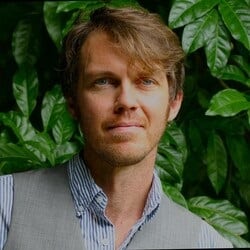
Scott Spillias © Scott Spillias
“We live on an ocean planet, yet almost all of the food we grow comes from land. When it comes to the sea, we are essentially just unsustainably hunting and gathering from our oceans. I want to know what it would look like if instead, we tried to farm them,” Spillias explains.
Spillias says that seaweed as an agricultural product is already useful with its range of uses including food, livestock feed, fuel, fertilizer, and multiple products in the form of hydrocolloids. Hydrocolloids, more commonly known as “gums”, are extracted from plants like seaweeds and algae; they are used as setting and thickening agents in a variety of products including foods and pharmaceuticals, often increasing shelf life and quality.
A University of California, Davis study found that incorporating seaweed in cattle feed could reduce methane emissions from beef cattle by as much as 82%. Moreover, seaweed’s broad range of uses can hypothetically decrease land usage in favor of sea usage. Seaweeds also serve many ecological roles such as filtering ocean waters, serving as nurseries for small fish and crustaceans, and protecting sea floors.
There are two types of seaweed farming in use today. In parts of China, South Korea, and Japan there is floating offshore seaweed production, where the seaweed is grown and harvested while floating in deep waters. Another form of seaweed farming seen in Indonesia, Tanzania, and the Philippines involves a different approach, where the seaweed is grown and farmed closer to the coast in shallower waters, or the intertidal zone. Both provide ecosystem services, jobs, and food for local populations.
As part of his YSSP project this summer, Spillias hopes to use the IIASA Global Biosphere Management Model (GLOBIOM) to determine land-use changes brought about by large-scale seaweed production.
“We are going to assume that the seaweeds we are growing will be for food, feed, and fuel. We are also taking certain constraints into consideration, such as the inability to place seaweed farms in high traffic shipping areas or marine protected zones. Getting rough estimates of seaweed production can then give us an idea of land commodities we can replace, for instance, corn used for biofuel,” he says.
Spillias hopes that this research can provide results that can influence policy.
“Locally, seaweed farming will either be beneficial or destructive – it depends on where you put it and how you do it. Zooming out and understanding how these tradeoffs relate to terrestrial production will give policymakers a clearer idea of whether to promote or restrict the practice.”
Note: This article gives the views of the author, and not the position of the Nexus blog, nor of the International Institute for Applied Systems Analysis.
Jul 1, 2021 | Biodiversity, Climate Change, Ecosystems
By Florian Hofhansl, researcher in the Biodiversity, Ecology, and Conservation Research Group of the IIASA Biodiversity and Natural Resources Program
Florian Hofhansl writes about a successful paper on which he was the lead author that was recently ranked #32 on the list of the Top 100 most downloaded ecology papers published in 2020.
Early in 2020, one of my manuscripts titled “Climatic and edaphic controls over tropical forest diversity and vegetation carbon storage” was accepted for publication in the prestigious journal Nature Scientific Reports.
Initially, I was worried about the bad timing when I was informed that the paper would be published on 19 March – right at the onset of the COVID-19 pandemic – since it took me and my colleagues almost a decade to collect the data and publish our results on the biodiversity and functioning of tropical forest ecosystems.
 However, my worries completely disappeared when I learned that our research article had received more that 3,000 downloads, placing it among the top 100 downloaded ecology papers for Scientific Reports in 2020. This is an extraordinary achievement considering that Scientific Reports published more than 500 ecology papers in 2020. Seeing our paper positioned at #32 of the top 100 most downloaded articles in the field, therefore meant that our science was of real value to the research community.
However, my worries completely disappeared when I learned that our research article had received more that 3,000 downloads, placing it among the top 100 downloaded ecology papers for Scientific Reports in 2020. This is an extraordinary achievement considering that Scientific Reports published more than 500 ecology papers in 2020. Seeing our paper positioned at #32 of the top 100 most downloaded articles in the field, therefore meant that our science was of real value to the research community.
We kicked off our study in the dry-season of 2011 by selecting twenty one-hectare forest inventory plots at the beautiful Osa peninsula – one of the last remnants of continuous primary forest – located in southwestern Costa Rica. We did not expect that our project would receive this much scientific recognition as we were merely interested in describing the stunning biodiversity of this remote tropical region. Nevertheless, we were striving to understand the functioning of the area’s megadiverse ecosystem by conducting repeated measurements of forest characteristics, such as forest growth, tree mortality, and plant species composition.
After periodically revisiting the permanent inventory plots, and recording data for almost a decade, we found stark differences in the composition of tropical plant species such as trees, palms, and lianas across the landscape. Most interestingly, these different functional groups follow different strategies in their competition for light and nutrients, both limiting plant growth in the understory of a tropical rainforest. For instance, lianas – which are long-stemmed, woody vines – are relatively fast growing and try to reach the canopy to get to the sunlight, but they do not store as much carbon as a tree stem to reach the same height in the canopy. In contrast, palms share a different strategy and mostly stay in the lower sections of the forest where they collect water and nutrients with their bundles of palm leaves arranged upward to catch droplets and nutrients falling from above, thus reducing local resource limitation.

Lead author Florian Hofhansl and field botanist, Eduardo Chacon-Madrigal got stuck between roots of the walking palm (Socratea exorrhiza), while surveying one of the twenty one-hectare permanent inventory plots © Florian Hofhansl
Our results indicate that each plant functional group – that is, a collection of organisms (i.e., trees, palms, or lianas) that share the same characteristics – was associated with specific climate conditions and distinct soil properties across the landscape. Hence, this finding indicates that we would have to account for the small-scale heterogeneity of the landscape in order to understand future ecosystem responses to projected climate change, and thus to accurately predict associated tropical ecosystem services under future scenarios.
Our study and its subsequent uptake by the research community, illustrates the value of conducting on-site experiments that empower researchers to understand crucial ecosystem processes and applying these results in next-generation models. Research like this makes it possible for scientists to evaluate vegetation–atmosphere feedbacks and thus determine how much of man-made emissions will remain in the atmosphere and therefore might further heat up the climate system in the future.
Our multidisciplinary research project furthermore highlighted that it is crucial to gather knowledge from multiple disciplines, such as botany (identifying species), plant ecology (identifying functional strategies), and geology (identifying differences in parent material and soil types) – since all of these factors need to be considered in concert to capture the complexity of any given system, when aiming to understand the systematic response to climate change.
Read more about the research here: https://tropicalbio.me/blog
Reference:
Hofhansl F, Chacón-Madrigal E, Fuchslueger L, Jenking D, Morera A, Plutzar C, Silla F, Andersen K, et al. (2020). Climatic and edaphic controls over tropical forest diversity and vegetation carbon storage. Scientific Reports DOI: 10.1038/s41598-020-61868-5 [pure.iiasa.ac.at/16360]
Note: This article gives the views of the author, and not the position of the Nexus blog, nor of the International Institute for Applied Systems Analysis.











You must be logged in to post a comment.